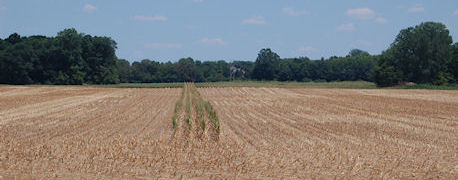
You don't have to drive too far in the country to find fields where most of the corn has been harvested, but there are still strips remaining, usually four rows wide, at various internals within the field. A good guess is that it has something to do with crop insurance.
If the field was chopped, the reason is obvious. An adjustor has to check the strips at harvest time to see what the corn actually made to assess the field for crop insurance purposes. What is harder to explain is why strips are left in fields that were harvested for grain. If fields are harvested, the settlement sheet from the elevator is used for crop insurance purposes rather than assessments by adjustors in the field.
There is one caveat, an insurance adjustor in the business says, and that's likely what you're seeing. If aflatoxin is an issue, and it is in hard-hit fields, especially in central and southern Indiana, then the adjustor must pull samples and send ears for inspection at a lab chosen by the Risk Management Agency of USDA. Elevator dock or aflatoxin reports are not accepted. It's important because some crop insurance policies also cover and will pay on the basis of quality. Aflatoxin results in lower quality grain. The GRIP policies that pay on county average yield, issues in early March, do not make any allowance for whether your corn had aflatoxin or not.
The strips are likely there because the farmer wanted to harvest the field before the adjustor could get there, this adjustor says. It's not ideal to do it this way because it means that if aflatoxin is present, the farmer has already done something with the corn. But crop insurance ceases once the corn is harvested, so the inspector needs to inspect for quality issues, like aflatoxin, before harvest.
There are rules as to how many strips should be left per field, depending upon field size. Typically, farmers are asked to leave entire passes across the field so the adjustor can get an idea of conditions in the entire field.
About the Author(s)
You May Also Like




